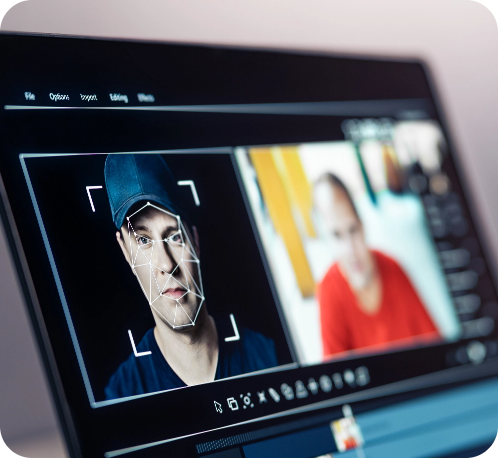Voting & Elections
Information on Voting and Elections in the State of New Mexico.
Candidates & Campaigns
Information on how to become a candidate and about complying with campaign finance disclosure and reporting requirements.
Legislation, Lobbying & Legal Resources
Learn about Lobbying in our state. Find Legislative information to include Signed & Chaptered Bills and Legal Resources.
Business Services
Start a business, maintain a business or get general information on registered businesses in New Mexico.
Notary & Apostille
Become a notary, renew your notary commission, or obtain information about apostilles or certification of official documents.
Commercial Services
File UCC's, AG Liens, register a trademark or other commercial filings.
Safe at Home
New Mexico’s statewide address confidentiality program administered by the Secretary of State to assist victims of domestic violence, sexual assault, stalking or similar types of crimes to receive mail using the Secretary of State’s address as a substitute for their own.
Cybersecurity
Learn about how we protect your voter and business information. You might also find a tip or two that will help you secure your information as well.
About New Mexico
Learn about New Mexico Government, History, State Symbols, State Songs and other important information about our state.
Unofficial Election Results
Results will become available after 7 PM on Election Day, November 2, 2021 and will be posted as they are received from the county offices.
Election Results Homepage
Election Day Voter Hotline
Toll Free: 1-800-477-3632
Santa Fe: 505-827-3600 Option 2
The Election Day Voter Hotline is available on Election Day, November 2, from 7:00 AM to 7:00 PM to assist voters with questions or concerns.
Voter Resources
Online voter resources include:
Voting and Elections
AI
Seeing is No Longer Believing
A.I. images, videos and audio clips are everywhere this election season. Don’t get fooled.
In 2024, just about anyone can create a realistic A.I. image, video or audio clip. These “deepfakes” are faster and easier than ever to make using software on the internet. This election season, be a smart voter and media consumer. Learn how to spot A.I. misinformation and when in doubt, check it out.
How to Recognize A.I.
The best way to spot A.I. content is to have a critical eye and approach media with skepticism. If you see something that seems questionable, do some online research to find the original context or source.

Photos
If you see a photo that seems questionable or unusual, zoom in (if you can) and look for the following things.
- Irregularities in human features. Look at the hands, fingers, and facial symmetry. A.I. generators struggle with these features.
- Inconsistent shadows and lighting. Inconsistent shadows or lighting that doesn’t match the light source are common in A.I. images.
- Odd facial features. Look for asymmetry or irregularities in faces, such as odd eye placement, ears at different heights, or noses and mouths that seem out of alignment.
- Too much perfection. A.I. images often have a plastic or overly perfect feel. They lack the imperfections and subtle variations of real images.

Videos
Deepfake video content is getting better every day, making it harder to identify. Below are a few common clues that indicate a video was generated by A.I.
- Strange shadows, blurring, and flickering lights. The light in A.I. generated videos often won’t follow natural patterns.
- Inconsistencies at the edges of people’s faces. A.I. generated videos often use face swapping, which can make the edges of a person’s face appear distorted.
- Skin that appears too smooth or too wrinkly. Often, the textures in an A.I.-generated video don’t look realistic. Look at people’s foreheads and cheeks to see if they match the rest of the face.
- Too much or not enough blinking. A.I. struggles to generate realistic facial expressions. Odd blinking patterns are a telltale sign that a video has been generated using A.I.

Audio
A.I. tools make it easy to replicate a person’s voice. Watch out for robocalls and other audio that seems off or says something unusual. Here are a few things to watch out for in audio content.
- Slurred words. With just a recording of someone speaking for just a few minutes, A.I. tools can generate a realistic audio clip of their voice saying anything. However, it may slur over words not used in the original audio clip.
- Flat, dry tone. A.I. can struggle to replicate appropriate human emotion in voices, resulting in a monotone voice.
- Background noise. A.I. generated audio will often have extra noise in the background. It can sound like a recording that was made with a low-quality microphone.
Can You Spot the A.I. Image?
A.I. imagery is better than it’s ever been. Think you can spot the deepfakes? You might be surprised how easily it is to be fooled. See if you can spot the A.I. generated images in this quick quiz.
A Quick Guide to Spotting A.I. Deepfakes
Download our quick guide to spotting A.I.-generated content. Share it on social, send it to a friend and spread the word about staying aware of A.I. misinformation this election season.
Turn to Trusted Election Information Sources
If you’re looking for information about elections in New Mexico, turn to trusted sources like the Office of the Secretary of State, or your County Clerk.
This Voter Information Portal offers up-to-date information on upcoming elections, election audit results and other resources.

Report A.I. Misinformation
If you come across something you think is A.I. misinformation this election season, we want to hear about it.
Email Elections@sos.nm.gov with a link to the image or video.
Additional Resources
Seeing Is No Longer Believing Radio Ad - English
Seeing Is No Longer Believing Radio Ad - Spanish
Risk in Focus: Generative A.I. and the 2024 Election Cycle (by the Cybersecurity & Infrastructure Security Agency)
Contextualizing Deepfake Threats to Organizations (by the Cybersecurity & Infrastructure Security Agency)
Artificial Intelligence (AI) and Election Administration (by the United States Election Assistance Commission)
Safeguards for Using Artificial Intelligence in Election Administration (by the United States Election Assistance Commission)
Upcoming Statewide Elections
2026 Municipal Officer Election: Tuesday, March 3, 2026
2026 Primary Election: Tuesday, June 2, 2026
2026 General Election: Tuesday, November 3, 2026
